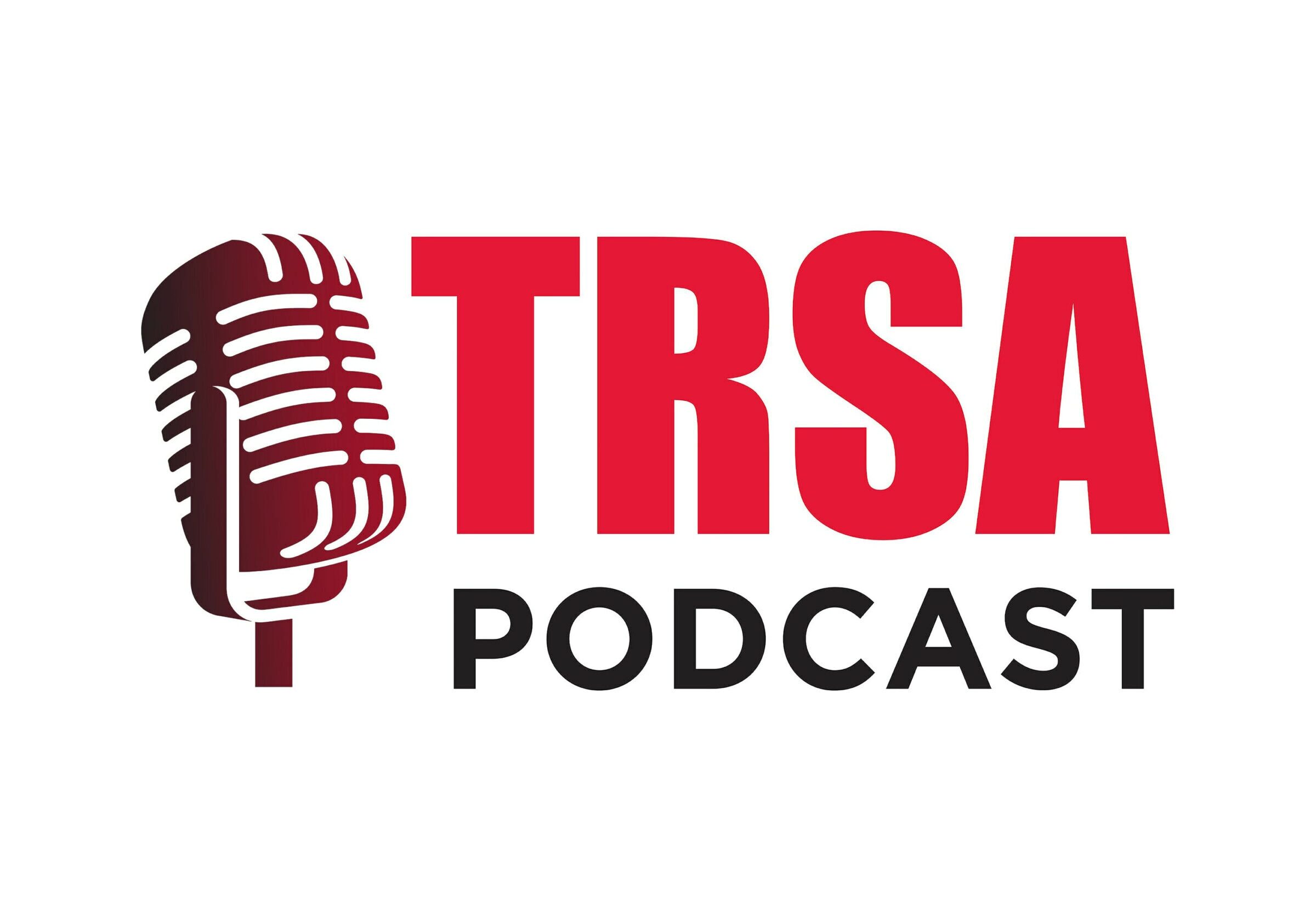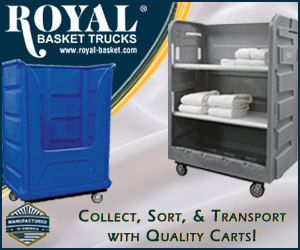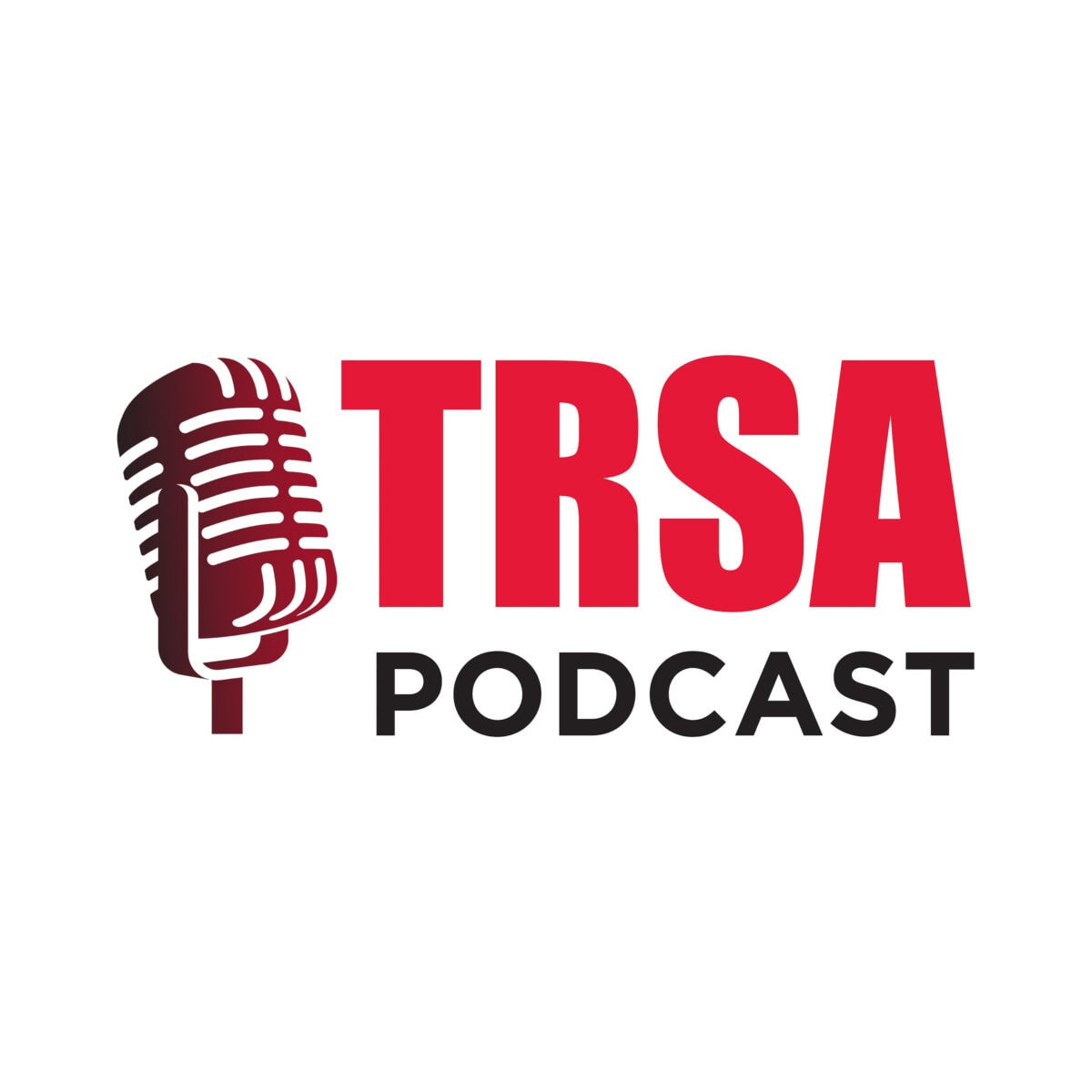Jay Rasmussen, the vice president of sales at Balfurd Linen Service, Tipton, PA, shares best practices for boosting your facility services offerings and revenues. For more information on TRSA’s Industrial, Uniform & Workwear Committee, contact Ken Koepper at kkoepper@trsa.org.
Welcome to the TRSA podcast. Providing interviews and insights from the linen, uniform, and facility services industry. Most Americans might not realize it, but they benefit at least once per week from the cleanliness and safety of laundered, reusable linens, uniforms, towels, mats, and other products provided by various businesses and organizations. TRSA represents the companies that supply, launder, and maintain linens and uniforms. And in this podcast, we will bring the thought leaders of the industry to you.
Welcome to another episode of the Linen, Uniform, and Facility Services podcast, interviews and insights by TRSA. I’m your host, Jason Risley. It’s been an exciting August 2021 at TRSA as the Association welcomed its Executive Management Institute and Professional Management Institute students back for in person instruction earlier this month at the University of Maryland. Last year’s institutes were canceled due to the COVID 19 pandemic. Looking ahead, TRSA will host several in person events over the next several months, including the 108th Annual Conference in October and the 10th Annual Healthcare Conference and 4th Annual Marketing and Sales Summit in November.
For more information on these upcoming events, visit trsa.org. On today’s episode of the show, we’ll take a look at Facility Services products and how to boost your company’s revenues by adding valuable products and services for your clients. Joining us to discuss this topic is Jay Rasmussen, the vice president of sales at Balford Linen Service in Tipton, Pennsylvania. The culture of adding value, you know, we need to recognize and incentivize the desired activity. We need to remove barriers and obstacles, and we definitely need to invest in training and tools.
Okay, so when we talk about the desired activity, if we don’t have a scoreboard that spells out the expectation, just good luck, right, and people have to know, am I winning or losing? Is this expected of me? You know, if I just every now and then get randomly asked if I’m, you know, if I sold any mops today, it’s, you know, it’s not a winning recipe. But if I know that I’m expected to sell a mop a week, 2 mops a week, 20 mops for this campaign, much different story. So when we talk about incentivizing desired activity, one thing, so big part of, my background was at AmeriPride.
What they landed on was, a dispenser credit. So one of the big challenges with a sales rep is, let’s say, if paper is ordered by the case, well, how do I factor that into commissions and so forth for, my rental sales number? And, you know, what got landed on was a dispenser credit. So let’s just say, for example, if you were to implement 1 in your organization that a sales rep got a $5 credit per week for each dispenser. So here I am a sales rep.
I’ve had this $75 a week average. Now I’m incentivized to sell paper towels, toilet paper. So 2 dispensers in this bathroom, 2 dispensers in this bathroom, 1 in the kitchen. Got 5 dispensers. So that $75 account for me, the sales rep, just became a $100 account, more value for the customer, better margin for our business.
And when they implemented that at AmeriPa, I gotta tell you, as a general manager, sales did not report directly to me and I still had to sign off on all the contracts. It was kind of this constant negotiation. Well, once they made that change, every account started coming with with all the stuff. Right? So instead of trying to grind it out $2 at a time through the service department, it all came as part of the the install package because the sales team was incentivized to do it that way.
Okay? So talking about that’s a major play, but just really making sure people are aligned properly. Like cross training, okay? So one of the most powerful things we can do, one of the biggest challenges out there is what do we do with my relief route person, right? I’ve got this relief person that’s supposed to cover vacations, and that only takes 30% of their time.
What are they doing the rest of the time? But one of the things they can do is cover everybody’s route while that person rides with a salesperson. Or salespeople can ride with service people. And we can get a lot of cross training going on, training in the different meetings. But that activity has to be recognized and incentivized if a person who’s really good at selling this stuff feels like it’s not supported for them to be hanging out with someone else teaching them how to do it, well, is that really what you should be doing with your time?
Well, obviously, they’re not gonna do it. If that’s recognized, hey, Karen, thank you for hanging out with Mark and showing him how this works. Great job. Now we’re gonna be on the right track. And, I gotta tell you, when you get people together in our company trying to figure out how to sell stuff, how to add value to the customers, that’s a fun place to be.
When we’re talking about the culture of of adding value, we’ve gotta remove the barriers and the obstacles. Okay? So one, kinda catch all move is guarantee savings. What’s, you know so we we went through reason number 1. K?
They know that we have this stuff now. Reason number 2, we’ve asked the decision maker. Well, what’s reason number 3? Why would they choose to get their stuff from elsewhere? Well, it’s a confusing shell game of pricing.
Right? It always is. And and they’re gonna be potentially embarrassed if they switch. Now they get their stuff from David and their bill you know, their spend goes up 20%. Right?
So, hey. I’ll tell you what. This is what I do, by the way. I’m riding with Karen. I say, hey.
Do you like Karen? Karen doing a good job for you? I tell you what, did Karen let you know that we’ll guarantee you 5% savings if you get your paper towels, toilet paper, hand sanitizer, soap, can liners, etcetera, from us? No, I didn’t know that. Okay.
Well, let’s talk about that. Okay? So things like that to remove the barriers and obstacles. Plus, it’s confusing. How am I supposed to know sheets versus rolls per case versus ply, plus the price changes 3 times a week now?
Forget it. We’ve got to have something that simplifies this process. And it’s gotta be a quality service. Right? So if we have air fresheners that don’t work, we’re just gonna sell them.
Okay? No brainer. But let’s make sure we get that part figured out. And then always remember that can liners are the gateway drug. Okay?
So this other stuff can be a little bit complicated. There’s dispensers involved and, you know, how often do I order cases, and there’s these other things where, you know, a box of can liners, many, many of our customers have a Sam’s Club box of can liners sitting on the shelf. Just say, hey. You just said you like Karen’s service, but what you’re saying is you’d rather drive to Sam’s Club and spend more than help Karen win this contest than put money in her pocket and yours. Is that what you’re saying?
Right? And then once we prove we can bring can liners, it really opens the door for all the rest of the stuff that’s a little more complicated. Now for a brief message from t r s a. Looking to do better by your customers, your business, and the planet? Two words, clean green.
Using a clean green certified company to process linens, uniforms, mats, and other reusable textiles assures a business that its laundry maximizes sustainability and has the smallest carbon footprint possible. From sorting to delivery, CleanGreen certified operations meet quality standards for effectiveness and conserving resources and minimizing environmental impact. Their large scale washing, drying and ironing technology is highly cost effective. Washers are programmed to minimize water, energy and chemicals. Water from rinses is reused.
Solid and liquid removal techniques clean drained water before it has back into the environment. And incoming water is warmed using heat recaptured from drained water reducing greenhouse gas emissions. Other sustainable practices used by clean green launderers include solar energy and energy efficient lighting, recycling, and preventive maintenance and spill prevention programs. Clean textiles are delivered on fuel efficient trucks that take the most direct routes, cutting down on waste and emissions. Clean green best management practices are approved by ASTM International.
The technical experts, scientists, and environmental professionals who create unparalleled standards for building consumer confidence in product and service quality. Other linen and uniform services claim they’re green, but only those who are clean green certified verify and quantify through continuous objective assessment by industry standards. Not sure if a company is clean green certified? Ask to see their certificate. Businesses need launderers that demonstrate responsible leadership conservation through reusing, reclaiming, and recycling resources.
To find a Clean Green certified company near you, visitcleangreen.org. Now back to the episode. Gotta invest in training and the tools. Okay? So talking about user friendly samples, literature, digital campaign, kinda help everything along.
Why not list our offering on every touch point? We can overcome reason customers don’t buy number 1 and number 2 just by listing all of our stuff, masks, mops, uniforms, linen, paper towels, toilet paper, Gojo, Purell, and every touch point. We’ve got all that white space on the invoices. Let’s get that stuff listed on there, right, at the delivery. Hey, David.
I didn’t know you guys did GoJo. Oh, yeah. I guess we do. Win. You know, we could put it in our email signatures.
Any letters we send to the customer, thank you, missus customer, stuff’s listed on there. Even on our agreements. Right? We control that paperwork, proposals, brochures. We have an advertisement.
Why not have the 12 things listed? It’s confusing anyway. Right? What does Balfour’s men in uniform do while we do these 12 things? Right?
Finally, gotta have training. Gotta have meetings, gotta have training in the field. None of this stuff happens without it, but it is really basically impossible to have a successful so, well, how am I gonna pay for all that payroll? You know, it’s expensive to get all these people together. Well, it’s expensive to not add all this very high margin revenue and value to our customers as well.
So just you can land on one side or the other, but, you know, tough to be in the middle. If you want to hear more tips from industry experts on how to improve and increase your facility services, offerings, and revenues, tune in to TRSA’s Improving Route Stop Performance webinar series, brought to you by TRSA’s Industrial, Uniform, and Workwear Committee. The final webinar in the 3 part series will take place on September 15th. Registration is available on trsa dotorg. You can view the recording for the first two parts of the series in TRSA’s on demand learning center, which houses more than 150 webinars, training videos, and other e-learning courses.
Many of TRSAs on demand webinars can be accessed by members for free at www.trsa.org/ on demand. Thanks again for tuning in to the podcast, and please subscribe, rate, and review our show on Apple Itunes, Google Podcasts, and Stitcher.
Publish Date
August 31, 2021
Runtime
12 min
Categories
Sign Up For Our Newsletter
Receive the latest updates on the linen, uniform and facility services industry from TRSA delivered straight to your inbox.









